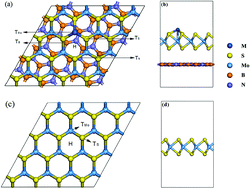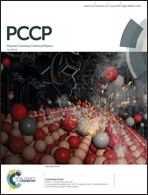Transition metal atoms absorbed on MoS2/h-BN heterostructure: stable geometries, band structures and magnetic properties
Abstract
We have studied the stable geometries, band structures and magnetic properties of transition-metal (V, Cr, Mn, Fe, Co and Ni) atoms absorbed on MoS2/h-BN heterostructure systems by first-principles calculations. By comparing the adsorption energies, we find that the adsorbed transition metal (TM) atoms prefer to stay on the top of Mo atoms. The results of the band structure without spin–orbit coupling (SOC) interaction indicate that the Cr-absorbed systems behave in a similar manner to metals, and the Co-absorbed system exhibits a half-metallic state. We also deduce that the V-, Mn-, Fe-absorbed systems are semiconductors with 100% spin polarization at the HOMO level. The Ni-absorbed system is a nonmagnetic semiconductor. In contrast, the Co-absorbed system exhibits metallic state, and the bandgap of V-absorbed system decreases slightly according to the SOC calculations. In addition, the magnetic moments of all the six TM atoms absorbed on the MoS2/h-BN heterostructure systems decrease when compared with those of their free-standing states.



 Please wait while we load your content...
Please wait while we load your content...